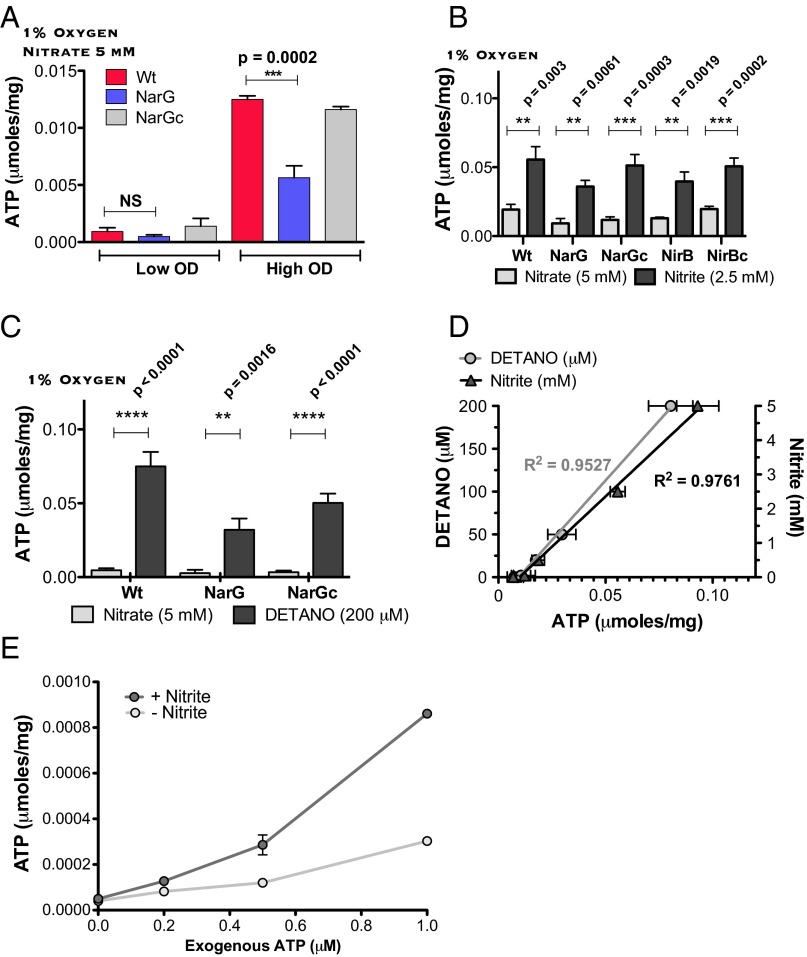Fig. 4.
Endogenously generated or exogenously supplied nitrite elevates ATP in Mtb and suppresses ATP consumption in its lysates. (A) Intrabacterial ATP content measured in WT (Wt), narG-deficient (NarG), or complemented (NarGc) strains of Mtb incubated at high (0.1) or low OD580 (0.01) for 3 d in 1% oxygen in the presence of 5 mM nitrate. Results are expressed per mg protein in the lysate and are means ± SEM from two experiments. (B) Impact of exogenous nitrite or nitrate on ATP content in WT, narG-deficient (NarG), nirB-deficient (NirB), and respective complemented strains (NarGc, NirBc) of Mtb incubated for 3 d in 1% oxygen. (Means ± SEM, n = 3 experiments). (C) As in B, but comparing the impact of single concentrations of nitrate (5 mM) and DETANO (200 μM). Means ± SEM, n = 3 experiments. (D) As in C, but comparing the impact of varied concentrations of nitrite (y axis on the right) and DETANO (y axis on the left). Means ± SEM, n = 2 experiments. (E) Recovery of exogenous ATP added to lysates from WT Mtb that had been incubated in the presence or absence of 2.5 mM nitrite for 3 d at 1% oxygen. ATP was added only after cell lysates had consumed endogenous ATP. Means ± SEM, n = 2 experiments. P values were determined by unpaired t tests.

